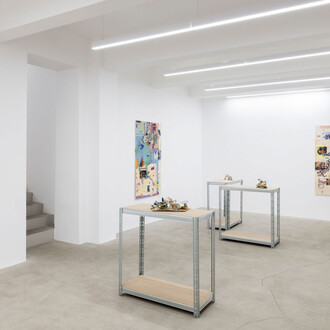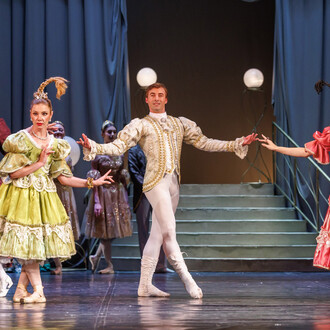Tehran, March 15, 2023: the countdown to Nowruz, the Persian New Year, is on and Hiva – like many Middle Eastern people – is preparing to celebrate the fire festival Chaharshanbe Suri.
In Iran, the Sacred Fire or Atash-e-Ghods is an important cultural and religious symbol that has been celebrated for thousands of years. A fundamental moment for all Persian culture, the Chaharshanbe Suri celebration is said to date back 15,000 years and has never been abandoned; it is celebrated by the Zoroastrians, but is still celebrated in the Islamic era as the feast of purification and preparatory celebration for the New Day.
This exhibition interprets this exact premise: a new era that advances with the New Day, thanks to the purification of fire – with its fascinating, catalyzing force that takes the form of its movements, colors, and heat.
Fire illuminates Hiva as he contemplates and marvels at it, enraptured. This exhibition is a tribute to fire as a sacred element of purification and life. In today’s society, fire now evokes associations that are more reminiscent of tragedy and destruction, but in the past it guaranteed salvation, offering protection from wild animals, heating caves or homes, and allowing man to cook and therefore feed himself.
But here we talk about fire in the Garden of Eden. This is the sacred fire that purifies and becomes a Symbol. Indeed, symbolism pervades the exhibition, as the artist creates his own symbolic alphabet, which is gradually consolidated as the abstract works take shape.
Throughout this cycle, the upper band of the "paintings" is characterized by the color black. For the artist, black represents the Whole, the Universe, infinite and eternal, and in this regard, he adds: "It is thanks to the dark that you can admire the brightness of the firmament. The darkness of the night sky complements the light that makes the stars shine.” Hiva quotes Rumi, a 13th century Persian mystic poet, "both darkness and light are the dance of Love" And that light, in the exhibition, is symbolized by the fire that pierces the darkness. The flames are found at the bottom of each work, with tongues reaching up, to the Supreme, purifying all that surrounds them.
It is incredible to notice how the locks of synthetic hair with which Hiva Alizadeh composes his "paintings" are able to evoke and synthesize the sinuous movement of the tongues of fire and their impalpable, yet voluptuous volume.
Equally, flowing foliage, in a multitude of blue and light blue shades give the appearance of the waters that biblically flow from the Garden of Eden.
Vibrant and vital, flowing water is a powerful substance, and is also a purifying force. The colors in the Garden of Eden are simultaneously brilliant and lashing, purified by the forces of both fire and water. Fire and water – complementary elements – are indomitable and have no fixed form. As they move, they are never the same, drawing us to observe them and admire their dance, and then abandon ourselves to their mesmerizing sounds and all-encompassing, enveloping sensations.
The falling expanses of brightly toned synthetic hair manages to offer these same sensations of enchanting movement.
Hiva Alizadeh, like the poet Rumi, invites us to venture into the "ultrasensitive" world, full of vibrations and sensations: a world where the invisible is much vaster and more important than the visible.
"Fire in the Garden of Eden" is the Iranian artist’s second solo show at The Flat-Massimo Carasi gallery in Milan. Hiva Alizadeh's work is rooted in the Persian tradition and the millenary skill of weaving Kerman carpets, although he applies his technique and knowledge to a different material, creating a contemporary interpretation of traditional textures, adding a cosmopolitan and psychic touch. Alizadeh's woven tapestries are created using synthetic hair extensions that he composes in vibrant neon color palettes.
Alizadeh's work is present in public and private collections throughout Europe, the Middle East, China and the USA, including important institutions and foundations such as Akzonobel Art Foundation – Amsterdam, The Netherlands, Palazzo Monti, Brescia, Italy, Frederick R. Weisman Art Foundation – Los Angeles, USA, Spring Collection, Kerman Museum of Contemporary Art, Iran and most recently, The Ned Doha Art Collection.
(Text by Daniela Barbieri)
















